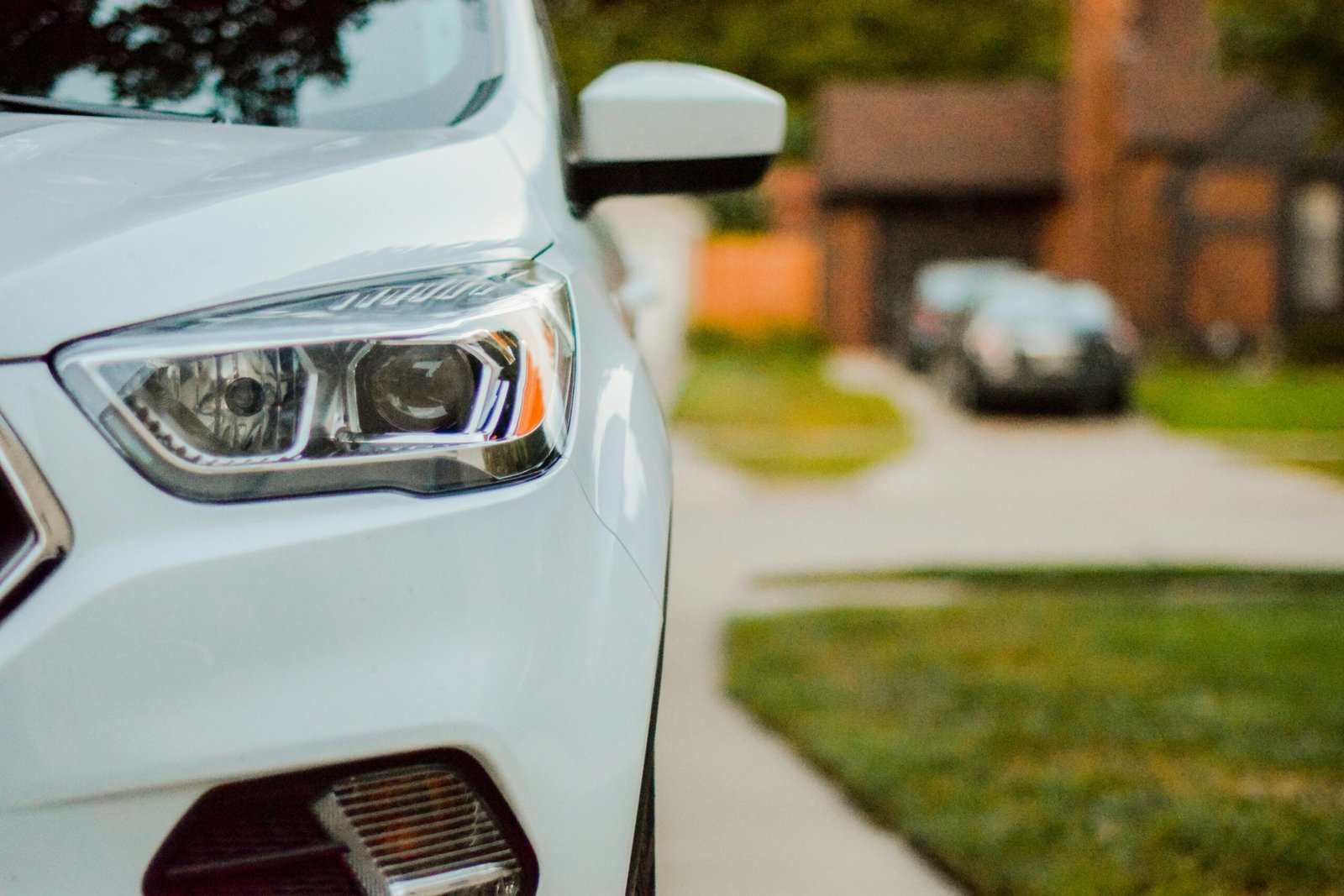Introduction to Car Insurance
Car insurance is a crucial aspect of vehicle ownership that serves as a financial safety net for drivers. It provides protection against a variety of potential risks and losses that may arise from accidents, theft, and other unforeseen events. For many individuals, having a car is not only a convenience but a necessity. However, this comes with responsibilities, including securing adequate insurance coverage that meets both legal requirements and personal needs.
The primary purpose of car insurance is to offer a safeguard against the financial implications of mishaps that can occur while driving. Accidents can lead to substantial costs from repairs, medical bills, and legal fees. Without proper insurance coverage, these expenses can pose a significant burden on individuals and families. Car insurance effectively reduces this risk by helping to mitigate the financial impact of such incidents, enabling drivers to mitigate potential losses with relative ease.
Moreover, car insurance provides peace of mind. Knowing that one has adequate coverage allows drivers to navigate the roads with a sense of security, aware that financial support is available in case of an emergency. Various types of coverage can be tailored to meet specific needs, whether it is liability coverage, collision insurance, or comprehensive policies. Each type serves a different function and addresses different types of risks associated with vehicle use.
In the following sections of this guide, we will explore the various types of car insurance coverage available, tips for saving on premiums, and essential factors to consider when choosing an insurance provider. Understanding these elements will further equip drivers to make informed choices about their car insurance needs, ensuring they are adequately protected on the road.
Types of Car Insurance Coverage
Car insurance is an essential aspect of vehicle ownership, providing financial protection in the event of an accident or other unforeseen incidents. Understanding the various types of car insurance coverage is crucial for making informed decisions. The primary types of car insurance coverage include liability insurance, collision coverage, comprehensive coverage, personal injury protection (PIP), and uninsured/underinsured motorist coverage.
Liability insurance is typically mandated by law and covers the costs associated with damage to another person’s property or injuries they sustain in an accident where you are at fault. For example, if you accidentally collide with another vehicle, your liability insurance would cover the repair costs for that vehicle and any medical expenses arising from injuries caused.
Collision coverage, on the other hand, protects your own vehicle in the event of a crash, regardless of who is at fault. This type of coverage would help cover the repair or replacement costs for your car after an accident with another vehicle, a tree, or any other object.
Comprehensive coverage offers a broader protection umbrella that covers damage to your vehicle not involving a collision. This can include theft, vandalism, natural disasters, and other incidents not related to a car accident. For example, if a hailstorm damages your vehicle, comprehensive insurance would typically cover the repair costs.
Personal injury protection (PIP) is a type of coverage that assists with medical expenses for you and your passengers, regardless of who caused the accident. This is particularly useful in severe accidents where medical bills can accumulate quickly. Lastly, uninsured/underinsured motorist coverage protects you if you are involved in an accident with a driver who lacks sufficient insurance or any coverage at all, ensuring that you are not left bearing the financial burden alone.
Each of these types of coverage plays a vital role in safeguarding your financial well-being while driving, and understanding their distinctions can help you choose the appropriate policy for your needs.
Understanding Liability Coverage
Liability coverage is an essential component of car insurance, often mandated by law in many jurisdictions. This type of coverage primarily safeguards the insured against legal claims and expenses that arise from accidents in which they are at fault. When a driver is involved in an accident that causes bodily injury or damages another party’s property, liability insurance helps to cover the associated costs, ensuring the insured is not financially burdened by these unforeseen events.
Liability coverage is generally divided into two main components: bodily injury liability and property damage liability. Bodily injury liability pertains to the medical expenses incurred by other parties as a result of an accident, including hospital bills, rehabilitation costs, and lost wages. This coverage protects the insured in situations where they may be held accountable for injuring others, allowing them to meet their financial obligations while also covering legal fees if a lawsuit arises due to the incident.
On the other hand, property damage liability addresses the costs associated with damage caused to another person’s property during an accident. This may encompass vehicle repairs, damage to fences, or other structures. This aspect of liability coverage is vital, as it not only addresses the immediate financial implications but also serves to maintain the insured’s responsibility and mitigate the risk of escalating legal disputes.
Understanding the limits of liability coverage is crucial for drivers. Insurance policies typically have maximum limits that dictate how much will be paid out in the event of a claim. If expenses surpass these limits, the insured may be liable for the remaining costs. Therefore, it is advisable to carefully consider the amount of liability coverage one opts for, balancing affordability with adequate protection against potential financial loss.
Comprehensive vs. Collision Coverage
When selecting auto insurance, understanding the differences between comprehensive and collision coverage is crucial for making informed decisions. Collision coverage is designed to protect your vehicle when it sustains damage from a collision with another vehicle or an object, such as a guardrail or a tree. This type of coverage ensures that you can repair or replace your vehicle after an accident, regardless of who is at fault. It typically involves a deductible, which is the amount you pay out-of-pocket before the insurance coverage kicks in.
On the other hand, comprehensive coverage provides financial protection for damages caused by events that are not related to collisions. This includes incidents such as theft, vandalism, fire, natural disasters, or hitting an animal. Similar to collision coverage, comprehensive also has a deductible that applies when you file a claim. However, this protection is particularly advantageous for those living in areas prone to severe weather, where damage from storms can be significant.
It is essential to recognize the benefits and limitations of both types of coverage. Collision coverage is vital if you frequently drive in heavy traffic or areas with a high incidence of accidents. Without it, you could face substantial repair costs after an accident. Conversely, if you are concerned about the potential for theft or other non-collision-related damage, comprehensive coverage is a wise choice. Many drivers opt for a combination of both types of coverage for maximum protection against a variety of risks.
In selecting the right auto insurance policy, consider assessing your driving habits, the value of your vehicle, and the potential risks associated with your environment. This evaluation will aid in determining the most suitable level of coverage to meet your needs.
How to Choose the Right Coverage for Your Needs
Choosing the right car insurance coverage is essential for ensuring that you are adequately protected while also remaining financially sensible. Several factors influence the level of coverage you might need, beginning with the age and value of your vehicle. Newer and higher-value cars generally necessitate comprehensive coverage, as repairs can be costly. In contrast, older vehicles may benefit from limited collision or liability coverage, particularly if the car’s market value is low.
Your driving habits also play a critical role in determining the appropriate coverage. If you regularly drive long distances or have a history of accidents, it may be prudent to opt for enhanced coverage. Assessing your daily driving conditions, such as whether you frequently navigate urban or rural areas, can further inform your decision. Urban driving tends to be riskier due to higher traffic congestion, potentially warranting a more robust insurance plan.
Additionally, it is crucial to consider your overall financial situation. Evaluating your budget will help you find a balance between necessary coverage and affordability. If you have limited financial resources to cover out-of-pocket expenses after an incident, it is advisable to lean toward higher coverage limits. Conversely, if you possess considerable savings, you might feel comfortable with a higher deductible, which can lead to lower premium costs.
Lastly, each state has specific insurance requirements that you must abide by. Familiarize yourself with the minimum coverage mandated by your state law to ensure compliance. By carefully evaluating these factors—vehicle age and value, driving habits, financial situation, and state laws—you can make informed decisions regarding your car insurance coverage, ultimately safeguarding your investment while aligning with your budgetary constraints.
Tips for Saving on Car Insurance Premiums
Reducing car insurance premiums can significantly alleviate financial strain. By employing effective strategies, individuals can ensure they are not overpaying for their coverage. One of the foremost recommendations is to shop around for rates. Many insurance providers offer different prices for identical coverage, thus comparing quotes from multiple companies can lead to considerable savings. Utilizing online comparison tools can streamline this process, making it easier to evaluate the best options available.
Another tactic to consider is bundling policies. Many insurers provide substantial discounts for customers who choose to bundle their auto insurance with other policies, such as home or renters insurance. This could not only create savings on the car insurance premium but also simplify the management of various insurance needs with a single provider.
Maintaining good credit is also crucial; many insurance companies factor in credit scores when determining premium rates. By consistently keeping debts low and ensuring timely bill payments, individuals can improve their credit rating, potentially leading to lower insurance costs. Moreover, it is advisable to inquire about any available discounts that can be applied to car insurance premiums. Providers often offer reductions for various qualifications, including safe driving records, completion of defensive driving courses, or low annual mileage. Thus, taking the initiative to understand and utilize these options can enhance savings.
Lastly, adjusting deductibles plays a vital role in managing insurance premiums. Higher deductibles often lead to lower monthly premiums, although this strategy should align with one’s financial capabilities. Customers should assess their readiness to cover higher out-of-pocket costs in the event of a claim. Implementing these strategies can provide a pathway towards reduced expenditures on car insurance, ultimately contributing to better financial management.
Factors Affecting Car Insurance Premiums
Car insurance premiums can fluctuate significantly based on several key factors. Insurance companies utilize a variety of criteria to assess risk and determine the cost of premiums for drivers. Understanding these factors is crucial for consumers looking to manage their insurance costs effectively.
One of the primary factors influencing car insurance premiums is the driving history of the insured individual. A clean driving record, free from accidents and traffic violations, typically results in lower premiums, as it indicates responsible behavior on the road. Conversely, a history of accidents or speeding tickets can raise premiums due to the perceived higher risk of future incidents.
Demographic factors such as age and gender also play a vital role. Statistically, younger drivers, particularly males, tend to have higher accident rates, which often translates into higher premiums. As one ages and accumulates driving experience, insurance costs may decrease, reflecting improved risk profiles.
Another significant consideration is the driver’s credit score. Many insurance companies use credit scores as an indicator of overall responsibility and risk, with higher scores usually leading to lower premiums. Conversely, a poor credit score can indicate financial instability and result in higher insurance costs.
The type of vehicle also impacts premiums substantially. High-performance cars or vehicles with poor safety ratings generally attract higher insurance costs. Meanwhile, safer, more reliable cars may qualify for discounts. Additionally, the insured’s location can affect premiums due to variations in crime rates, traffic density, and local regulations. Urban areas may experience higher premiums due to increased risk of theft and accidents.
Lastly, a driver’s claims history is meticulously reviewed. Those with a history of frequent claims may be considered higher risk and face elevated premiums. Recognizing these factors offers drivers an opportunity to improve their risk profile and potentially lower their insurance costs.
The Claims Process Explained
Understanding the car insurance claims process is crucial for policyholders, especially after experiencing an accident or unfortunate incident. The first and most vital step is reporting the accident to the authorities, usually requiring a police report if there are injuries or significant damage. Prompt reporting not only safeguards your rights but also fulfills your insurance policy obligations.
Once the incident is reported, the next step involves documenting the damages. This includes taking clear photographs of the vehicles involved, recording license plate numbers, and noting down details of the accident, such as time, location, and weather conditions. Collecting contact information from witnesses and other parties can substantially support your case. Accurate and comprehensive documentation aids in the insurance adjuster’s assessment and can expedite the claims process.
Communication is pivotal when dealing with the insurance adjuster. After filing your claim, an adjuster will likely reach out to gather further details. Be prepared to provide the necessary information, including your policy number and details of the incident. When interacting with the adjuster, remain polite yet assertive, ensuring that you communicate clearly and answer questions as accurately as possible. Misunderstandings can lead to delays or complications in your claim.
Lastly, maintaining thorough records throughout the claims process is essential. Keep copies of all correspondence, receipts for repairs, medical bills if applicable, and any direct communication with healthcare providers or auto repair shops. This organized and systematic approach will foster a smoother interaction with your insurance company and can alleviate stress should any disputes or questions arise during the claims process.
By understanding these integral components, you can navigate the car insurance claims process confidently and efficiently. Being prepared not only empowers you but can also lead to a more satisfactory resolution.
Frequently Asked Questions about Car Insurance
Car insurance can often be a complex topic, leading to numerous questions and misunderstandings among policyholders. One common inquiry relates to the influence of car insurance on credit scores. Indeed, many insurance companies utilize credit-based insurance scores to help determine premiums. This practice raises concerns about how a poor credit score may affect insurance rates. Generally, individuals with lower credit scores may face higher premiums, which underscores the importance of maintaining good credit health alongside car insurance management.
Another frequent question pertains to what occurs if a policyholder chooses to cancel their car insurance. When individuals decide to terminate their car insurance policy, it’s crucial to understand the possible consequences, as this can leave them without coverage during a critical time. Often, insurers may impose cancellation fees, and individuals should be aware that lapses in coverage could lead to increased future premiums or challenges in obtaining new insurance. Always consult your insurance provider for guidance on the proper cancellation procedures to avoid unnecessary penalties.
Disputes with insurers are common, and policyholders often question how to effectively handle these situations. It’s advisable to maintain clear records of all communications with the insurer, including dates, times, and the names of representatives. Should a disagreement arise over claims or policy details, consumers should first attempt to resolve the matter through direct communication with the provider. If mutual resolution fails, escalating the issue through filing complaints with state insurance regulators or seeking legal advice may be necessary. Understanding your rights and effectively managing disputes can significantly ease the process of car insurance ownership.


